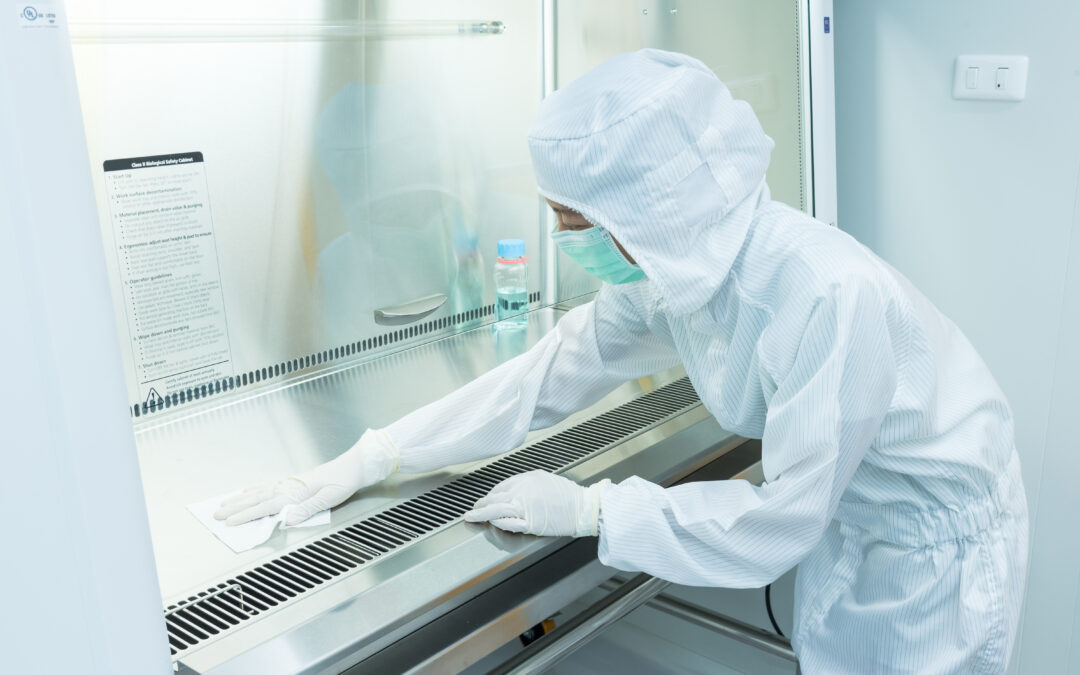Your Answers to Frequently Asked Questions About Cleanroom Classifications
Cleanroom classification can be one of the most confusing parts of designing and building your cleanroom – but it’s also usually the most important aspect. Every type of cleanroom requires a different classification depending on your industry and purpose.
So, if you’re new to the world of cleanrooms and have questions regarding classifications, we’re here to help. Here are answers to some of the most common cleanroom classification questions we receive.
10 Cleanroom Classifications FAQs
If you’ve got cleanroom questions, you’re in the right place. We’ll explore what type of cleanroom classification you need, inspection requirements, design needs, and more!
1. What cleanroom classification do I need?
Your required cleanroom classifications and standards will depend on your industry. The requirements will vary depending on what size particles need to be filtered, the sources of contamination present, and the recommended air change rate.
If your industry is government-regulated, you can check applicable regulations for the required classification. If there is no government-mandated or industry default classification, you’ll need to determine the appropriate classification based on your application, and we can help with that.
2. How are cleanrooms classified?
Two different classification scales are generally used for cleanrooms: the U.S. General Service Administration standards (FS209E) and the International Standards Organization (ISO) classifications. The classes are determined by the maximum acceptable numbers of particles (by size) in the air per cubic meter.
3. What are the ISO classes?
The ISO classification system has eight classes and defines the level of cleanliness based on the concentration of airborne particles. Here’s a breakdown of the eight ISO classes from least controlled (ISO Class 8) to most controlled (ISO Class 1):
- ISO Class 8: This class allows the highest concentration of airborne particles. The maximum allowable particle count is 3,520,000 particles per cubic meter of air (0.5 micrometers and larger in size).
- ISO Class 7: The maximum allowable particle count is 352,000 particles per cubic meter of air (0.5 micrometers and larger).
- ISO Class 6: The maximum allowable particle count is 35,200 particles per cubic meter of air (0.5 micrometers and larger).
- ISO Class 5: The maximum allowable particle count is 3,520 particles per cubic meter of air (0.5 micrometers and larger).
- ISO Class 4: The maximum allowable particle count is 352 particles per cubic meter of air (0.5 micrometers and larger).
- ISO Class 3: The maximum allowable particle count is 35 particles per cubic meter of air (0.5 micrometers and larger).
- ISO Class 2: The maximum allowable particle count is 7 particles per cubic meter of air (0.5 micrometers and larger).
- ISO Class 1: The most stringent of all, ISO Class 1 cleanrooms allow only one particle per cubic meter of air (0.5 micrometers and larger).
4. How often do I need to test my cleanroom to see if it’s meeting classification requirements?
ISO classifications require that air pressure difference and flow be tested every 12 months. Particle count tests must be performed every 12 months for ISO Class 6 and above and every six months for ISO Class 5 and below.
There are also tests recommended for all classes every 24 months: installed filter leakage, containment filter leakage, recovery, and airflow visualization. These tests are regulated by ISO document 14644-2 Cleanroom Testing and Compliance.
5. How often do I need to have my cleanroom inspected?
How often you need your cleanroom inspected depends on your classification. The more stringent classifications will require inspection more often. Inspection may coincide with compliance testing, which may occur every six or 12 months, depending upon the cleanroom classification.
6. How does cleanroom classification affect my budget?
The more stringent the classification, the greater the cost of the cleanroom. Strict classifications require more air, energy, advanced technology, and equipment. For a more detailed breakdown of the costs, see How Does Cleanroom Classification Affect Your Cleanroom Budget?
7. Can I redesign my cleanroom if my required classifications change?
Yes, of course! Every company is bound to evolve, and our cleanrooms can change right along with them. All Angstrom cleanrooms are modular, meaning they can be expanded or decreased in size, components can be added or removed, and any other design changes can be made.
8. Can I replace a major cleanroom component if need be?
Yes, the Angstrom team would be happy to help you with that. We offer all necessary cleanroom components and can help you replace them quickly and easily.
9. Do I need a permit to build a cleanroom?
In most cases, small cleanrooms built within a plant or any pre-existing structure usually do not require a permit. However, verifying this with your local building codes department is crucial before construction.
Larger cleanrooms might require a permit under specific circumstances. Our team of seasoned cleanroom professionals can offer guidance on whether a permit is required and assist you in liaising with local building code officials.
10. Are hardwall cleanrooms or softwall cleanrooms more clean?
Both hardwall and softwall cleanrooms can be built to meet the same air-change-per-hour standards. However, hardwall cleanrooms typically offer a more complete barrier to particle intrusion and better control over atmospheric temperature and humidity.
Softwall cleanrooms generally have a perimeter air gap to maintain very little positive pressure and no negative pressure differentials. Hardwall cleanrooms can hold a significant positive pressure, which prevents particulate intrusion.
Expert Cleanroom Services From Angstrom
At Angstrom, we aim to redefine excellence in cleanroom solutions, setting the industry standard for innovation, quality, and customer-centricity. If you have more questions about your cleanroom classifications or just cleanrooms in general, we’d love to chat! Request a quote today for all your cleanroom needs.



